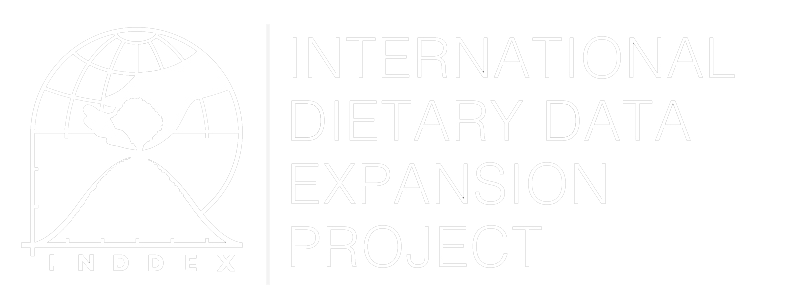Cost and Affordability of a Healthy Diet (CoAHD)
Overview
Approximately 3.1 billion people cannot afford a healthy diet (FAO, 2020). Quantifying economic access to a nutritionally high-quality diet is a critical step in developing policies to enable affordable, healthy food for all. The Cost and Affordability of a Healthy Diet (CoAHD) is a metric developed by the Food Prices for Nutrition Project,led by researchers at Tufts University in collaboration with the World Bank and IFPRI. The metric yields actionable information on the cost of healthy diets in countries around the world and the extent to which populations can afford to consume these diets.
The CoAHD is a type of food affordability measure, and is one of several market-level metrics included in Data4Diets, along with food consumer price indices and food price volatility metrics. There are several ways of determining food affordability. According to a scoping review conducted by the Global Alliance for Improved Nutrition (GAIN), food affordability can be measured based on income, social safety net assistance, and household expenditures (Djimeu et al., 2022). The Economist reports annually on food affordability at the country level as a dimension of its Global Food Security Index (GFSI), with metrics that include: changes in food costs reported through food consumer price indices, population under the poverty line, and inequality-adjusted income.
Among the newest and, increasingly, most impactful, approaches to quantifying food affordability is the suite of metrics developed by the Food Prices for Nutrition (FPN) Project. These metrics include the Cost and Affordability of a Healthy Diet (CoAHD), which is now reported annually in the SOFI report along with other food security measures (FAO, IFAD, UNICEF, WFP, WHO, 2023). Other metrics in the suite developed by the FPN examine the cost and affordability of a nutrient-adequate (CoNA) diet and an energy-sufficient diet measured by the cost of caloric adequacy (CoCA), considered of lesser overall diet quality than the healthy diet modeled in the CoAHD.
Method of Construction
The cost of a healthy diet is the monetary cost of purchasing, at current PPP$/person/day, the least expensive foods that are locally available and meet the food-based dietary guidelines (FBDGs) and the energy requirements of a person at a value of 2330kcal/day. The affordability of a healthy diet is then measured as the ratio of the cost of a healthy diet to the $1.12 food poverty line (52% of the international poverty line of $2.15/day in 2017 PPP$) (World Bank).
The CoAHD indicators draw information from four data sources (FPN):
- Consumer prices of food items in the local market
- Food composition of each food item to determine their nutrient contribution
- Daily requirements for health that the food items can meet
- Household income or similar data such as wages to determine the affordability of the food items
Additional details of the methodology used to compute these metrics can be found in Herforth et al (2023).
Uses
The CoAHD provides useful information on the proportion of the population that can purchase a least-cost healthy diet given their income and the price of food available in local markets. It is a useful indicator to monitor and model the effects of food price variations on populations' healthy diet access across space and over time, including as the result of policy changes or various shocks such as conflict or pandemic disease that could be expected to affect consumer access to healthy foods.
Strengths and Weaknesses
The CoAHD fills a big gap by providing context-specific affordability information for a healthy diet across 174 countries. A strength of this set of metrics is that it is relatively easy and inexpensive to develop and update as it usually pulls from existing, frequently updated, market-level data as opposed to household-level data or individual-level data that are typically collected less frequently.
Because the CoAHD indicator is typically (though not necessarily) calculated from secondary data aggregated across many data points, the accuracy and timeliness of the metric is dependent on the quality and availability of the underlying data, and data quality issues may not be apparent to users of the index.
Data Source
The Food Prices for Nutrition DataHub is a resource housed by the World Bank that provides openly accessible data at the country level on the cost and affordability of healthy diets. Data on the availability and price of food are sourced from the International Comparison Program (ICP). These data are then combined with data on nutrition requirements, food composition, and available income to construct the CoAHD and related indicators that can be accessed through the DataHub.
Links to Guidelines
Links to Illustrative Analyses
- FAO, IFAD, UNICEF, WFP and WHO. (2022). The State of Food Security and Nutrition in the World 2022. Repurposing food and agricultural policies to make healthy diets more affordable. Rome, FAO.
- Masters, W.A., E.M. Martinez, F. Greb, A. Herforth and S.L. Hendriks (2023). Cost and affordability of preparing a basic meal around the world in J. von Braun et al., eds, Science and Innovations for Food Systems Transformation.
- Masters, W.A., Y. Bai, A. Herforth, D. Sarpong, F. Mishili, J. Kinabo, and J.C. Coates (2018). Measuring the affordability of nutritious diets in Africa: price indexes for diet diversity and the cost of nutrient adequacy. AJAE
